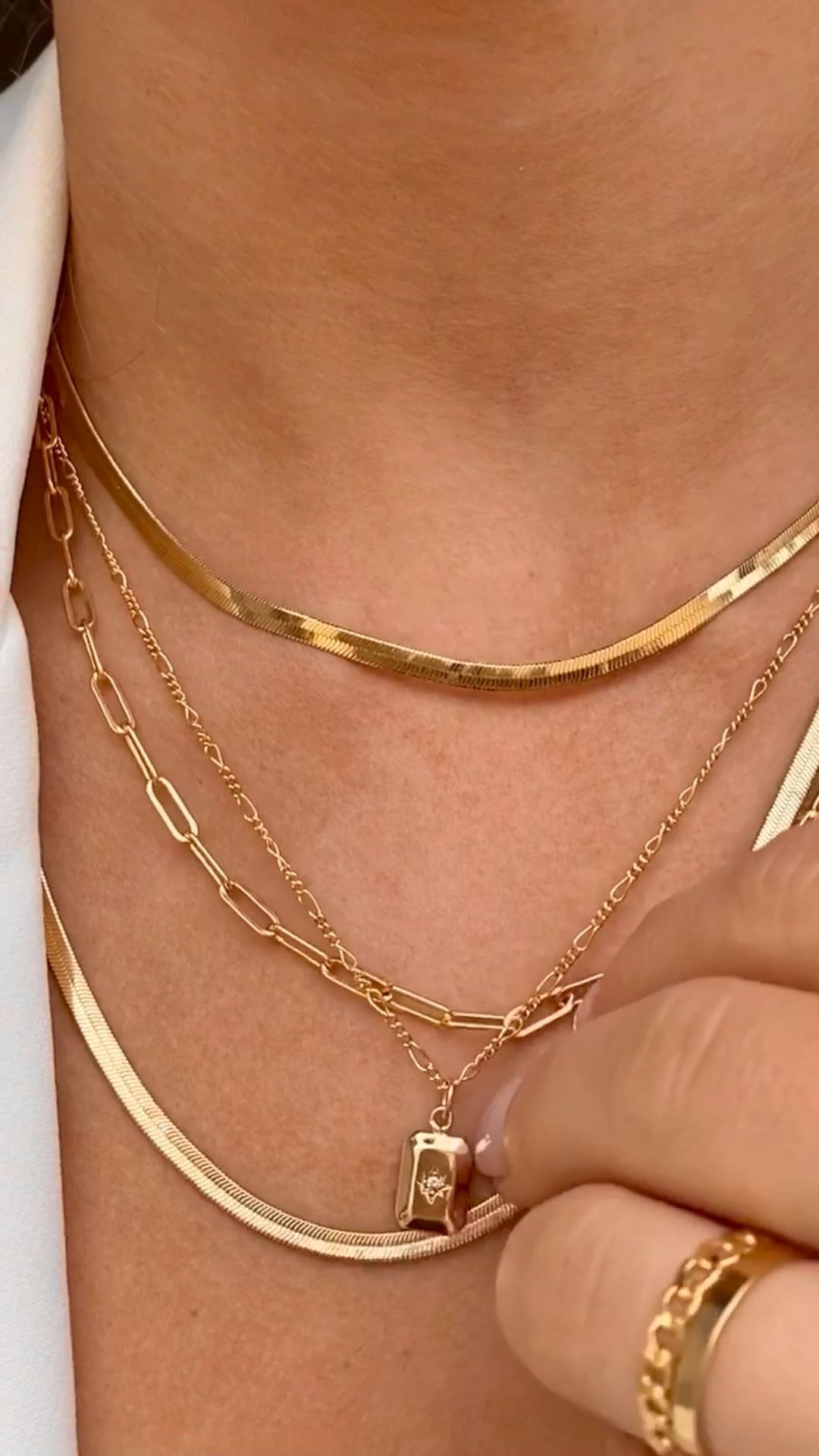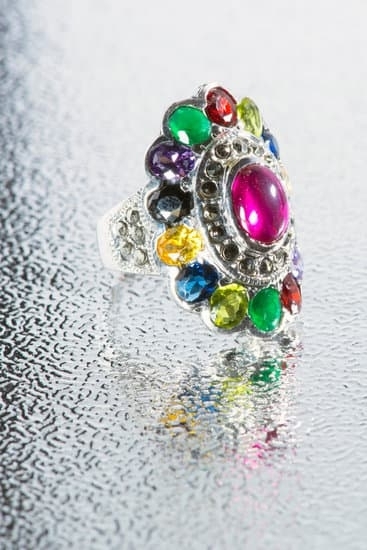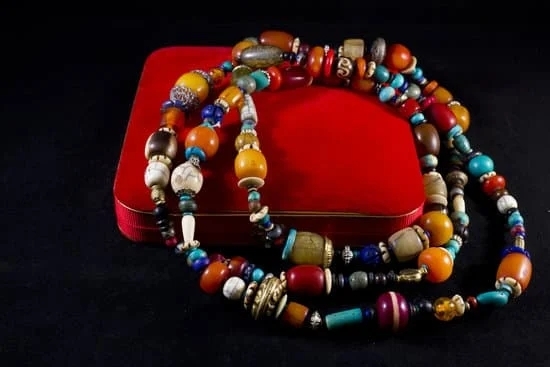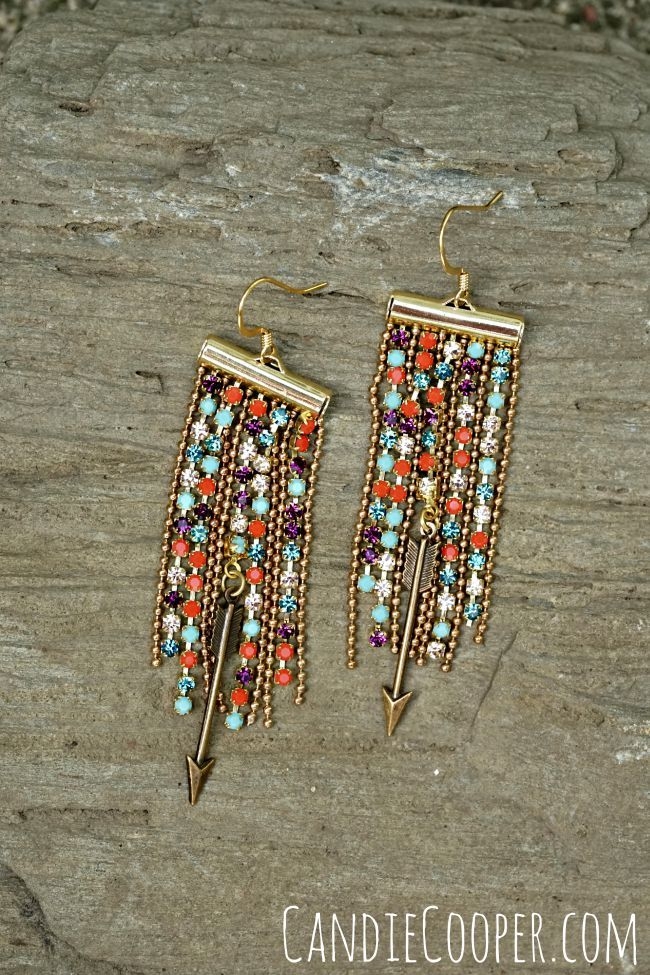Jewelry maintenance retipping is a process in which the point of a jewelry piece is reshaped and strengthened after wear and tear has taken its toll. It can be applied to rings, earrings, pendants and other pieces from necklaces or bracelets. Through this technique, the original wearer’s favorite pieces can be saved from an otherwise untimely death.
The metal on jewelry pieces often fail at soldering points during ordinary use such as when they catch against clothing or key chains so having the metal retipped before it gets too damaged is an important jewelry maintenance procedure. Retipping metal on exposed areas of delicate jewelry can also prevent prongs from chipping and splitting, making it a worthwhile investment for any jewelry enthusiast.
The Process of Jewelry Maintenance Retipping
Retipping usually involves simply welding additional metal onto existing solder-points without having to replace entire components of a piece of jewelry. In some cases the entire loop may have to be replaced depending on what damage it’s suffered from throughout its life.
Before the actual retipping procedure starts, the prong must be inspected for any small nicks or chips that need to be smoothed out over larger surface area defects causing gaps or holes to appear between parts of the setting.
After all necessary repairs and dents are taken care of, an additional layer of metal will be applied using super thin wire that is melted onto the prong with a laser welder adding extra strength where needed. This will help maintain secure hold while reinstating durability without changing any part’s shape or size so every piece looks great once again.
Aftercare for Jewelry Maintenance Retipping
When caring for your newly repaired jewelry consider avoiding any activities involving water as this can cause premature failure due to weakened points previously repaired with Jewelry Maintenance Retipping.
Additionally, one should take extra caution when picking other items up off surfaces as there could potentially still be sharp edges not picked up by careful inspection beforehand that could cause discomfort later down the road if left completely unaltered following their initial resizing or repair work session at hand at that moment in time.
As always with expensive purchases like this – insurance coverage should also seriously be considered just in case something unexpected happens because no one ever wants their valuables get stolen or lost without any recourse available afterwards.
Common Questions About Retipping Jewelry
Retipping is a jewelry repair process that involves replacing the worn ends of bits of gemstones and metal. This type of jewelry maintenance is often necessary as the wear on a piece of jewelry can accumulate quickly over time, leaving it looking dull and faded. Here are some common questions customers have as they consider retipping their pieces of jewelry.
What Causes Damage to Jewelry?
The most common cause of damage to a piece of jewelry is everyday wear and tear. An individual wearing the same piece of jewelry every day can easily cause damage, especially if it has been subjected to extreme activities such as sports or housework.
Even wearing rings while sleeping can cause metal edges to become smooth and soften, which can lead to fractures in the metal’s surface over time. In addition, sunlight and humidity levels can also affect metal and gemstone surfaces, leading to damage as well.
What Are The Benefits Of Retipping Jewelry?
Retipping your jewelry offers several benefits for its wearer. Firstly, it helps restore the original aesthetic appearance of the piece by repairing any lost prongs or damaged facets that have occurred due to wear and tear or other environmental factors such as humidity or sunlight levels.
In addition, this process helps protect your stones from further damage by reinforcing weakened areas on the metal structure. This can help prolong the lifetime of both the metal structure and precious stones used in your jewelry design, presenting you with greater value preservation in your pieces over time.
How Long Does A Retipping Process Take?
The amount of time it takes for a retipping process depends largely on how badly damaged your piece has become as well as how intricate a design it contains. On average however, most retippings take between 4-6 weeks before they are available for collection once again. As such it is important to plan ahead when considering this repair procedure so that you do not experience delays due to lack of sufficient lead-time in organizing repairs.
What is Jewelry Maintenance Retipping?
Jewelry Maintenance Retipping is a process in which the tips of jewelry items, such as earrings or rings, are repaired and restored so they appear new. Due to the repeated use and wear of jewelry, it’s prongs and settings may become damaged over time, resulting in the gemstone falling off and becoming lost.
To prevent this from happening, regular maintenance is necessary to ensure that your valuable jewelry remains in its best condition. Jewelry Maintenance Retipping should be done by a professional who has experience in this area to guarantee a secure fit for your precious stones.
When having Jewelry Maintenance Retipping done, the professional will look at the properties of each item separately. The prongs are checked for any signs of damage or weakening so that these can be replaced or fixed before any stone setting occurs. If there are any broken elements present, these will also be assessed so that a suitable replacement can be chosen to retain the original style of the piece.
Furthermore, cracks within stones and irregularities in shape may require re-working so that they once again fit properly into their designated settings. This step is crucial to preserve valuable stones and prevent loss in the future.
Finally, when all changes have been made to ensure secure fitting of gemstones or other precious items within settings, soldering must take place carefully to secure each element permanently and securely together once more. These additional steps are taken by professionals to further strengthen old pieces while adapting them with modern technologies used in today’s craftsmanship industry; restoring your piece back to its original glory just with an added hint of sparkle and elegance.
Different Types of Jewelry That Require Retipping
There are a variety of different types of jewelry that may require retipping in order for them to maintain their original beauty. Jewelry with prongs or settings that have developed wear and tear over time need to be re-tipped to properly secure the stones and prevent further damage.
This can be done by adding new tips onto existing prongs, so they better hold the stones in place. Examples of items that require retipping include rings with gemstones set into prongs, earrings with multiple settings, pendants and necklaces with multiple settings, and brooches with more than one stone that has been prong-set in it.
Retipping is also important when replacing missing stones or replacing older stones in an item such as a ring or necklace. If the piece of jewelry contains old stones needing to be replaced with newer ones, it’s essential that these new stones have their tips properly secured during the setting process to ensure their proper placement and protect from movement.
If this isn’t done, the pieces could easily fall off or become loose overtime due to movement which can lead to loss or even further damage.
The quality of materials used for retipping is also very important since its purpose is ultimately to protect precious gems and metals from further harm. To guarantee dependable durability and an aesthetically pleasing overall appearance, skilled artisans use high quality gold, sterling silver, palladium, titanium or platinum alloys when retipping jewelries which provide maximum strength when setting new stones.
Once finished, not only will the jewels look stunning but any necessary replacements can be kept securely held in place ensuring future longevity of your particular jewelry piece.
Why Retipping Jewelry is Important
Having your jewelry retipped is important if you have an expensive piece of jewelry that you would like to maintain and wear without worries. Jewelry with pointed tips or stones can become loose over time, or due to accidental damage. They are particularly susceptible to the pressure applied by everyday activities such as opening doors and wearing clothing.
This can cause the delicate prongs that secure the stones to come loose, which could mean your precious jewels could fall out and be lost forever. Retipping these pieces helps maintain their original beauty and durability by returning them back to their original, secure condition.
Retipping jewelry is also recommended for those who are looking to extend the longevity of their pieces. When it comes to fine, high-end gemstones like diamonds, sapphires, emeralds and rubies – keeping them securely in place significantly increases their lifespan when worn on a daily basis. Therefore investing in having pieces professionally retipped can save you from paying for the much more expensive process of remounting in the future.
Furthermore, retipping this particular item often involves seamlessly blending gold or platinum into other types of metal to ensure a discreet transition that doesn’t disrupt the overall aesthetic integrity of your item. A professional jeweler will be able to use techniques such as welding and soldering in order to blend any metals together without affecting any existing patterns or motifs within the piece itself – making it look just like new while protecting it from further damage down the line.
All-in-all, retipping jewelry is an excellent way to protect against loss of valuable gems and extend life expectancy of high-end items with pointy tips or areas prone to falls us distortion over time. Investing in this service should be considered essential for anyone wishing maximize their enjoyment from wearing beautiful pieces of jewelry for years too come.
What to Consider Before Retipping Jewelry
Retipping jewelry is an important process for those who wish to keep their necklaces, earrings, and other adornments in pristine condition. Retipping is replacing the worn-out tip of a piece of jewelry with a more durable material that ensures its longevity. It can also help protect beading and intricate designs from getting damaged. However, before one decides to retip their jewelry, there are some things to consider first.
The first thing to assess before retipping is the complexity of the piece itself. If the jewelry in question has a complicated design that takes time and expertise to replicate perfectly, it may not be worth attempting to retip it at home.
Cost might be another consideration when deciding whether or not to get one’s jewelry retipped professionally. Retipping jewelry can often be expensive due to specialized labor costs and materials needed to complete the job because high-quality materials must be used in order for the end result to last long-term.
In addition, maintaining proper care for all styles of jewelry-even pieces that have been successfully retipped-is essential in preserving quality and value throughout time. In order to keep pieces looking dazzling and new, they should only be handled with clean hands; rings should not be worn while washing dishes as this will cause grime and germs to accumulate in them, which will lead to discoloration over time if not addressed immediately.
Additionally, it’s important for all users of jewelry never leave them exposed for too long, as moisture or extreme temperatures could lead gems and metals to corrode or worse. Lastly, amorous items should always be stored away from extreme heat or sunlight – with airtight cases preferred whenever possible – as this will help keep them looking gorgeous until they are ready for re-usage once more.
Potential Risks and Challenges of Retipping Jewelry
Retipping jewelry is a relatively simple process, but jewelers must be careful and pay attention to detail to ensure their work minimizes the potential risks and challenges of this technical process. Jewellers also need to understand the risk-reward mechanics associated with strong maintenance practices, because disregarding them can translate into costly consequences.
One of the primary challenges associated with retipping jewelry is choosing the correct materials for a successful repair. As with any repair job, if the wrong type of material is used it can cause further damage to the piece, proving more costly in time and money.
It’s important that jewelers stick to metal or precious stones renowned for their durability when engaging in retipping or other maintenance work; these tend to be harder metals and gemstones such as diamond or titanium. Another challenge related to choosing the right materials is making sure they are compatible with each other so that there are no unexpected issues later on.
Additionally, since retipping requires precise cutting and shaping, jewelers must make sure they’re using tools that allow them to handle different types of stones as well as various metal alloys without damaging either of them. Properly crafted tools are essential for ensuring an accurate cut and preserving the structural integrity of both material components.
Jewelers should further ensure their work environment is properly cleaned and ventilated prior to working on any kind of preservation project; even a small trace particle left behind can create unforeseen problems if not taken into account during the preparation phase. All these considerations help in minimizing risks associated with retipping jewelry.
The Benefits of Retipping Jewelry
Retipping jewelry is a cost effective way to restore damaged jewelry and keep it looking beautiful. This relatively quick and simple process gives the wearer their precious items back in pristine condition, restoring them to full value, strength and functionality. With proper retipping, you can literally bring your beloved jewels back from the brink of ruin.
The process of retipping is often necessary when prongs become weak after a significant amount of use, or if one or more stones become loose or removed completely due to an accident. Retipping makes sure that pieces stay secure and give the piece an overall new look.
If jewelers do not do adequate repair work, they can sometimes damage a metal mount even more – making it harder and more expensive to repair in the future. Conversely, professional jewelry maintenance includes retipping services that come with warranty and extensive attention to detail that protect the item properly.
Because some people are leery about investing the resources required for professional retipping, they may opt to attempt repairs themselves at home with makeshift tools like bobby pins or sealing wax – this is highly discouraged. Improperly repaired pieces can cause further damage down the line and won’t last as long as jewelers properly serviced piece.
Additionally professional jewelers have years of experience doing such repairs which ensures superior quality with less room for mistakes – ultimately reducing the chances for additional damage down the line consecutively saving individuals time and money in replacing those irreparable objects later on.
Finally, expert retippers will always recommend regular cleaning sessions if your item requires additional care due to continual wear over time; however routine maintenance is also important for keeping jewelry looking great all year round-even on special occasions like anniversaries and birthdays.
Fortunately there are plenty of companies around that offer comprehensive jeweler’s insurance plans that cover all types of accidental damages including theft protection too which adds an extra layer security for peace of mind when gifting expensive handmade items within families or purchasing items whimsicallyf.
Step-by-Step Guide to Retipping Jewelry
Retipping is a straightforward process that can help extend the life of your jewelry. To ensure optimal performance and longevity, follow this step-by-step guide for retipping your jewelry.
Step 1: Begin by gathering all of the necessary tools required for retipping, such as tweezers, pliers and whatever tips you plan to use (this will depend on the type of jewelry being worked on). Make sure all these tools are clean before starting.
Step 2: To begin the process, remove any loose stones or broken beads from the item of jewelry being worked on. These can then be set aside and placed in a safe location until needed again. Once you have done this, begin to carefully bend back any misplaced prongs with your tweezers or pliers; just remember to do it gently.
Step 3: Now it’s time to start making changes. Choose which tips you want to use and carefully insert them into the empty setting with your tweezers or pliers. You should make sure they are securely fastened before moving onto the next step. It is always advisable to double-check again after each tip has been inserted to make sure there are no gaps between them and that they have been properly seated into their designated places.
Although retipping may initially seem daunting, following these steps closely will help you retip effectively each time for consistent results every time. Have patience when working with delicate pieces as rushing may lead to breakage or worse. If executed correctly, this easy yet valuable procedure can drastically extend your jewelry’s lifespan; giving it more time spent in its rightful place on your body.
Professional versus DIY Jewelry Maintenance Retipping
Retipping is the process of replacing a broken prong on jewelry, such as a ring or necklace. This is usually necessary when a stone has been pulled out due to wear and tear or improper care. If a prong is missing, it leaves the stone vulnerable to being lost, damaged or stolen.
Therefore, it’s important to address a broken prong as soon as possible to protect both the stone and the piece of jewelry itself. There are two main options for retipping-professional retipping and DIY retipping.
Professional retipping is typically done by a professional jeweler. The quality of results with professional retipping depends on the expertise of the jeweler performing the work. Jewelers have access to specialized equipment that makes frequent precision adjustments easy and stress-free.
Most professionals offer warranties on their work, meaning they will repair any issues related to their craftsmanship without charging extra fees. Professionals also provide additional services such as cleaning and polishing that add value to the experience.
The cost for these services vary depending on the size and complexity of the job at hand as well as how many prongs need repairs; however, professional jewelers generally charge less than DIY methods due to their expertise in metalwork and diamond setting techniques.
DIY retipping can be performed by anyone with basic jewelry repair skills using commonly available tools like pliers, burs, files and polishing cloths. While this approach can save money versus outsourcing to a professional jeweler, it can also lead to frustration if done incorrectly.
DIYers should be especially careful when handling gemstones; many stones are soft and easily scratched which could irreparably damage them during repair attempts without proper equipment or supervision from an experienced expert. Additionally, time can be wasted while attempting repairs if severe inaccuracy occurs-it may take several iterations before one gets accustomed enough with proper technique in order for successful repairs on their own piece of jewelry at home.
Cost-Benefit Analysis of Retipping Jewelry
Jewelry maintenance is an important part of keeping your expensive jewelry looking its best. A common procedure for jewelry maintenance includes retipping weak and worn-out claws or prongs that secure stones to the main setting. Retipping is a cost-effective way to refurbish your favorite pieces without having to invest in a completely new piece of jewelry.
One primary benefit of retipping is cost savings. Calling upon a jeweler to design and create a brand new piece from scratch can range from hundreds to thousands of dollars depending on the materials used.
However, when only retipping the existing setting or adding extra protective features such as gallery clasps, it can cost as little as one sixth than what ordering a brand new piece would cost. Investing in jewelry maintenance every 12 months can maximize the longevity of your jewels and help you maintain their value even if you do not plan to resell them anytime soon.
The second key benefit to retipping jewelry pieces lies in the precious time that is saved with this particular action versus having to create an entirely new piece. The time associated with designing and creating one specific type of ring alone could reach up several weeks versus making adjustments or tweaks on an existing item which could typically be done with 1 day’s work in case there are no complications involved.
Additionally, simply re-tipping allows customers more freedom and control over design tweaks they may want incorporated into existing pieces as individual requests can often be met during the process instead of having complete reliance upon designs available off-the-rack at many stores today.
Having such control and easier access upon certain design enhancements could make all the difference for those who prefer something specifically tailored towards their tastes since it would give them full control along the way throughout the entire process.
Overall, retipping is a great way of helping maximize longevity, value and beauty for one’s most treasured pieces at minimal costs associated with both money and time compared against designing an entirely new piece from scratch through specialized jewelers these days.
It represents sound decision making both long term financially as well as being accessible upon being able to better customize one’s jewellery designs based on personal preferences any way someone likes them done just right in order for people everywhere around us presenting themselves best according their very own distinct personalities.
Conclusion and Final Thoughts
Jewelry maintenance retipping is an important procedure that helps protect your valuable jewelry from damage caused by wear and tear. A good quality retipping job will ensure the longevity of your favorite pieces for many years to come. Retipping is also a great way to update the look of older jewelry designs, as well as giving them a fresh, modern feel.
When it comes to jewelry maintenance retipping, there are several things to keep in mind. First off, you should always use a professional jeweler who has experience and knowledge when it comes to doing retipping work. This ensures that the job will not only be done properly but also safely.
Furthermore, make sure to inquire about the materials being used in the process. Some subpar metal or alloys can cause severe color fading or other problems over time if they’re not of high quality.
The retipping process itself is fairly simple and straightforward; however, because of its precision nature it’s best left to the professionals. The first step involves grinding away any worn-out metal on the prongs until they reach the desired shape and length they had prior to any wear and tear.
After that’s complete, a new tip is added containing more higher-quality metal than before allowing for a longer lasting protection against further wear and tear damage. In some cases another gemstone or design element such as diamonds may be added at this part of the process for an extra degree of shine and bling factor to your beloved piece of jewelry.
Finally, once all initial steps are completed, one last polishing is advisable before returning it back into circulation or storage condition so that the overall piece looks clean and shiny from any angle; this makes sure that all your hard work was worth it.
Jewelry maintenance retipping lasts for years without requiring much attention apart from occasional cleaning with a soft cloth – making it both interesting and essential protection for your precious pieces in order to keep them looking their best.

Welcome to my jewelry blog! My name is Sarah and I am the owner of this blog.
I love making jewelry and sharing my creations with others.
So whether you’re someone who loves wearing jewelry yourself or simply enjoys learning about it, be sure to check out my blog for insightful posts on everything related to this exciting topic!





